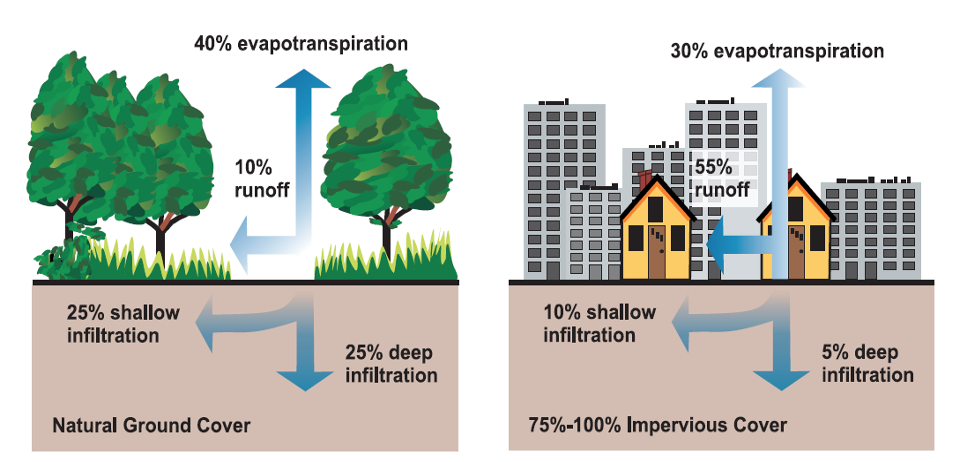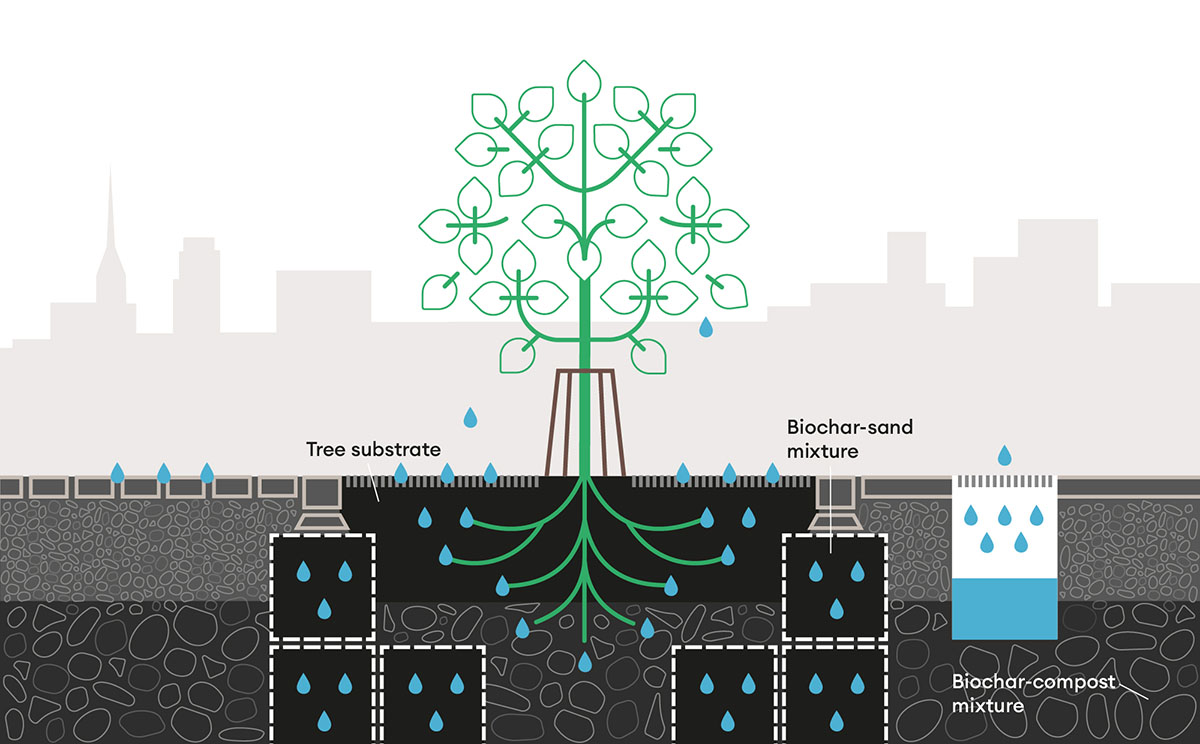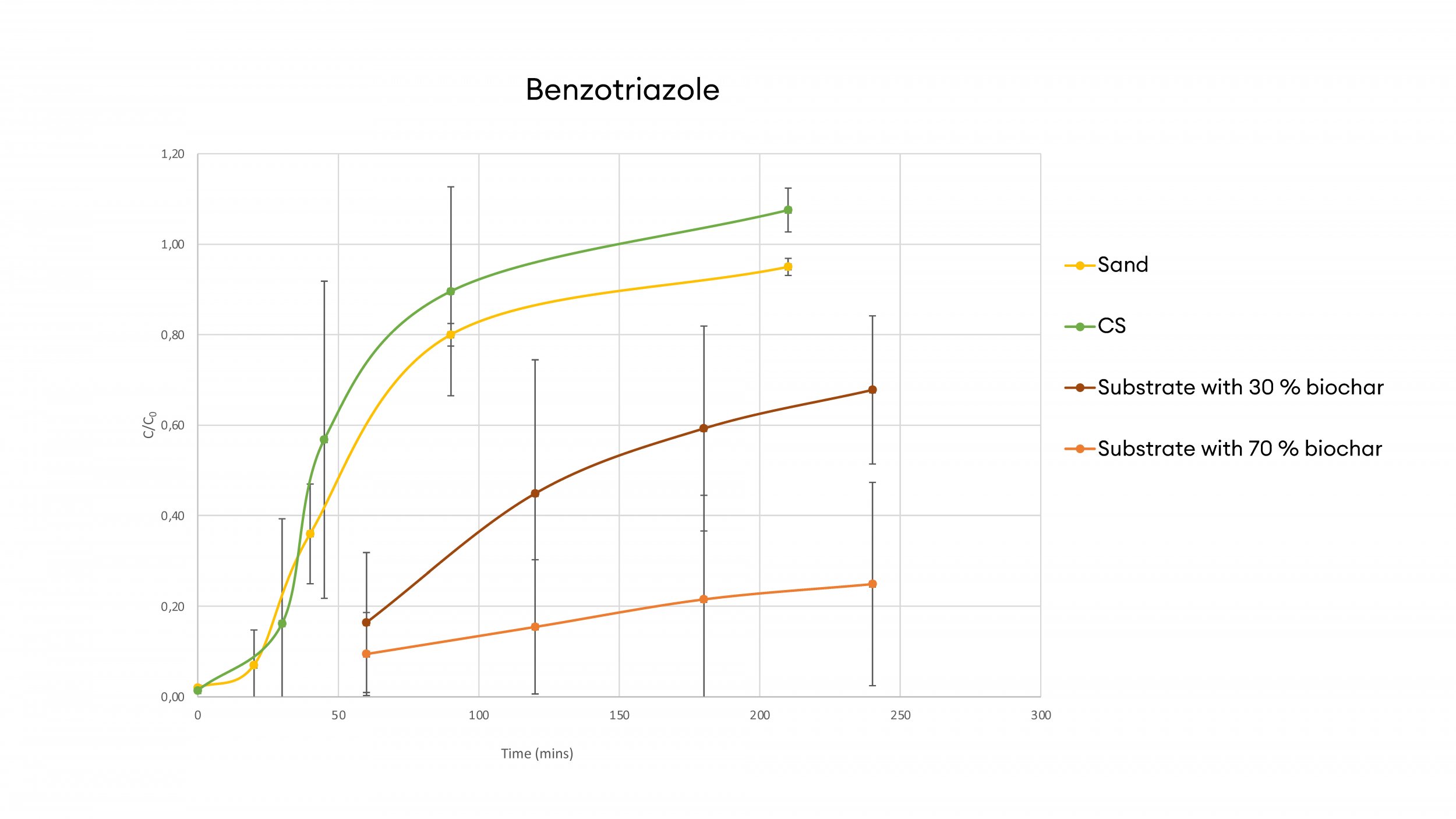Extreme weather events are increasingly putting human life to the test, especially in urban areas. Better preparing cities for climate change is the aim of blue-green infrastructure projects. Biochar can play a key role in preventing cities from flooding, heat waves and water pollution.
According to the German Federal Statistical Office, an estimated 4.6 billion of the 8 billion people worldwide lived in cities in mid-2023: this is 57% of the world’s population. Based on United Nations (UN) projections, the global urban population will increase to 5.2 billion people by 2030. Urban areas have become the center of people’s lives – and at the same time harbor climate-related risks that need to be addressed.
Due to global warming and the rise in temperatures, extreme weather events such as heat waves, droughts, flooding and storms are on the rise: According to studies by Munich RE analyzing the effects of global warming on weather-related natural catastrophes, the number of extreme weather events worldwide has doubled since the early 1990s. These weather extremes can become a huge threat to human life, especially in urban areas, destroying ecosystems, infrastructure and habitats. Recent flooding like in Porto Alegre (Brasil) and Southern Germany in spring of 2024 dramatically showed one of the main problems in densely populated areas: the water cycle in nature and in cities is different.



